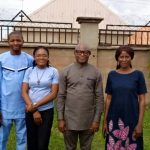What is safeguarding?
Safeguarding is about keeping people safe from harm. This includes protecting your right to live in safety, free from abuse and neglect.
What is abuse?
Abuse is a violation of someone’s human and civil rights by another person or group of people.
The person causing harm may be known to the person suffering abuse. They may be in a position of trust and power. They may be a professional in healthcare, social care or education. They could be a friend, relative or neighbour.
Abuse can happen anywhere, including at home or in public places. It can happen at school or college, or in resource centres or accommodation services.
Abuse can be a single incident or repeated acts of abuse and neglect.
What do I do if I think I am being abused or neglected?
If you think you are being abused or neglected, there are some things you can do:
- Tell someone you trust, such as a friend, family member or a professional who will understand the situation and help you to take action.
- Talk about your concerns with a professional, such as a teacher, support worker, doctor, social worker or nurse. You could also contact your local council’s Safeguarding Team.
- Talk to the police or ask someone you trust to help you to speak to the police.
What are the signs of abuse and neglect?
Recognising the possible signs of abuse and neglect is complex and there is no simple checklist that can be followed.
People with care and support needs can find it difficult to let others know that they are being harmed or abused. They may not understand that what is happening to them is wrong. They may not be able to tell other people about what is happening or know how to raise their concerns.
It is important to be aware of the possible indicators of abuse and to be vigilant so that you can support someone if you are concerned.
You may become concerned about a person if you notice they:
- have become quieter, withdrawn from activities, contact or communication.
- have lost weight or appear malnourished.
- seem to be struggling with money or have no money available.
- have cuts, bruises or injuries that can’t be explained.
- have changed behaviour.
- have changed sleeping patterns.
It’s important to remember that these are only possible indicators and do not confirm that a person is being abused or neglected.
It is always better to do something if you are concerned about a person and to make sure that they are safe.
What do I do if I am concerned about someone?
You should start by talking to the person about your concerns.
- Let them know that you’ve noticed a change and that you’re concerned about them.
- Listen to them and remain calm, even if what you hear upsets you.
- Be patient – they may not want to talk at all or may be scared.
- Do not promise that you won’t tell anyone what you’ve heard, even if they ask you to. If the person is being harmed or neglected, it is important to seek help from others as soon as possible.
- Make it clear that they have a right to feel safe, and that what’s happening to them is wrong.
You should then report your concerns and what you’ve been told to someone with responsibility for safeguarding.
- At Sense, the manager, operational manager, Director of Operations or Head of Safeguarding.
- For people not using Sense services, the person’s GP or another professional, such as their social worker, teacher, nurse or support worker.
- The local council’s Safeguarding Team.
- The police, if you think the person is at immediate risk.






